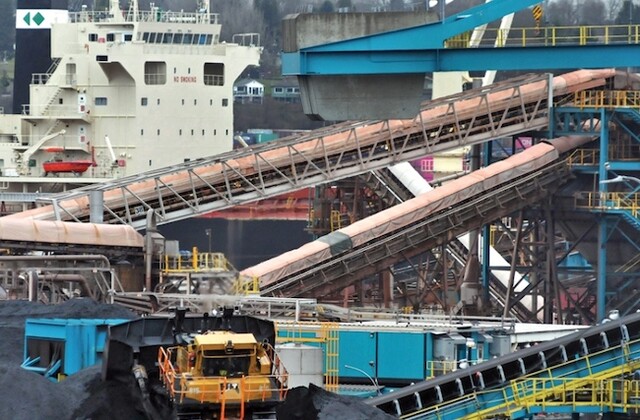
North Vancouver bulk terminal to shut down for five months
North Vancouver’s Neptune Bulk Terminal is preparing to shut down for five months before roaring back to life following an $800-million upgrade.
Mining giant Teck Resources Ltd., which is part owner of Neptune, announced the May-to-September shutdown in its fourth-quarter financial report released last week.
When finished, Neptune will be capable of exporting 20 million tonnes of metallurgical coal per year, compared to 10 million tonnes per year now.
“I wouldn’t say they’re building a completely new metallurgical coal system, but it’s not far from it,” said Claus Thornberg, president of Neptune Terminals. “We’re upgrading most of the existing infrastructure – a major overhaul if you like – so that that we will be able to more than double the capacity for Teck at Neptune.”
New infrastructure coming to the site includes a new ship loader, a new double rotary dumper for offloading by rail cars, one new stacker reclaimer, new rail tracks and an overpass to the “inner circle” of the rail loop.
The numbers of International Longshore & Warehouse Union workers on site at Neptune fluctuates regularly with the amount of product that needs to be moved but Thornberg they have been considered during the furlough.
“We will be engaging our workforce in a lot of commissioning activity, operational readiness activity and training as well. So hopefully it will have little if limited impact on the variable workforce,” he said.
While the site will be host to many construction cranes in the meantime, once the project is finished, the average North Vancouver resident passing by won’t notice much difference overall, except for a larger ship loader, Thornberg said.
The work has been years in the planning process and it has already received all the permits it needs from the Vancouver Fraser Port Authority, Thornberg said.
Neptune is also currently dredging the berth in front of the terminal to make room for Capesize cargo vessels – so named because they are too large to transit the Panama or Suez canals and therefore generally pass around the Cape of Good Hope in Africa or Cape Horn in South America.


